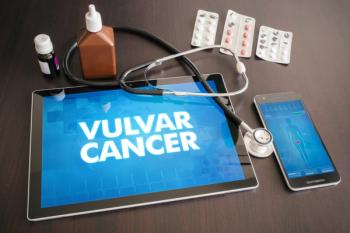
Endgame for postmenopausal hormone therapy?
In view of the recent publication by Chlebowski et al linking menopausal hormone therapy and progestin with breast cancer, clinicians are asking whether it is time to stop prescribing even short courses of such treatment.
In view of the recent publication by Chlebowski, et al,1 linking menopausal hormone therapy containing estrogen and progestin (HT) with breast cancer, clinicians are asking whether it is time to stop prescribing even short courses of such treatment. The answer to this vexing question is very different when viewed from a public health versus individual patient perspective.
The 2002 Women's Health Initiative report: fallout
The tale of the Women's Health Initiative (WHI) study is well known to Contemporary OB/GYN readers. In 2002, WHI investigators reported that compared with placebo, combined estrogen and progestin treatment modestly increased the risk of myocardial infarction, breast cancer, stroke, and venous thromboembolism while relieving menopausal symptoms and reducing the risks of osteoporotic fractures and colorectal cancer.2 In the year following the WHI publication, sales of oral HT preparations fell 32%.3 However, arguments in favor of short-duration HT initiated soon after the onset of menopause have persisted for several reasons. First, there is the apparent lack of cardiovascular harm accruing in women who begin HT between the ages of 50 and 59 years or within 10 years of menopause, presumably before atherosclerotic plaques have formed.4 Second, multiple observational studies have suggested that HT simply unmasked latent breast cancers displaying a lower grade/stage and/or more favorable steroid receptor profile.5,6 However, such studies may have been biased because HT users tended to be younger, have lower body mass indices (BMI), and be more adherent to mammographic screening.7
HT: a clear and present danger?
The study by Chlebowski, et al, tracked the occurrence of breast cancer among WHI participants through an initial intervention phase (November 15, 1993-July 7, 2002), a post-intervention phase (July 8, 2002-March 31, 2005), and an extension phase (April 1, 2005-August 14, 2009).1 Investigators used intention-to-treat analyses and observed that compared with placebo, postmenopausal estrogen plus progestin treatment was associated with a higher annual prevalence of invasive breast cancers (293 cases [0.34% per year] vs 385 cases [0.42% per year] producing a hazard ratio [HR] of 1.25; 95% confidence interval [CI], 1.07-1.46). Moreover, these cancers were not of a more favorable histological grade or steroid receptor profile, were more likely to be lymph node positive (43 [16.2%] vs 81 [23.7%]; HR, 1.78; 95% CI, 1.23-2.58), and were more likely to cause death directly attributed to breast cancer (12 deaths [0.01% per year] vs 25 deaths [0.03% per year]; HR, 1.96; 95% CI, 1.00-4.04). No confounding was observed by age or BMI and surveillance was comparable. More concerning was the finding that the association held even when HT was begun within 5 years of menopause (HR, 1.41; 95% CI, 1.14-1.74) with a strong trend among women age 50 to 59 years (HR, 1.31; 95% CI, 0.98-1.76).
But perhaps the most ominous finding of the Chlebowski, et al, study was the potential for this association to strengthen dramatically over subsequent years. An accompanying editorial by Bach noted that:
[I]t is probable that the increase in breast cancer deaths due to hormone therapy has been underestimated in the current study and that with longer follow-up, the deleterious effect will appear larger. This suggestion is based on several observations: The mortality curves appear to still be separating at the end of the current follow-up (Figure 4A in the article); the difference in cumulative breast cancer incidence between women in the hormone therapy and placebo groups is widening (Figure 2 in the article), which will ultimately lead to more deaths; and the breast cancers diagnosed among women who received hormone therapy are associated with a poorer prognosis.10
Furthermore, there is an abundance of circumstantial evidence to support the association between postmenopausal HT and breast cancer. Concomitant with the post-WHI decrease in HT prescriptions, there has been a sustained secular trend toward decreased breast cancer diagnoses.11 A recent study suggests that the occurrence of menopausal symptoms is actually inversely linked to the risk of breast cancer. Thus, women who experienced menopausal symptoms had lower risks of invasive ductal carcinoma (odds ratio [OR], 0.5; 95% CI, 0.3-0.7), invasive lobular carcinoma (OR, 0.5; 95% CI, 0.3-0.8), and invasive ductal-lobular carcinoma (OR, 0.7; 95% CI, 0.4-1.2).
Moreover, no confounding was observed due to age or BMI. Increasing intensity of hot flashes was associated with decreasing risks of breast cancer (P<.02).12 This suggests that HT increases rates of breast cancer in a group paradoxically at lower a priori risk!
Newsletter
Get the latest clinical updates, case studies, and expert commentary in obstetric and gynecologic care. Sign up now to stay informed.











